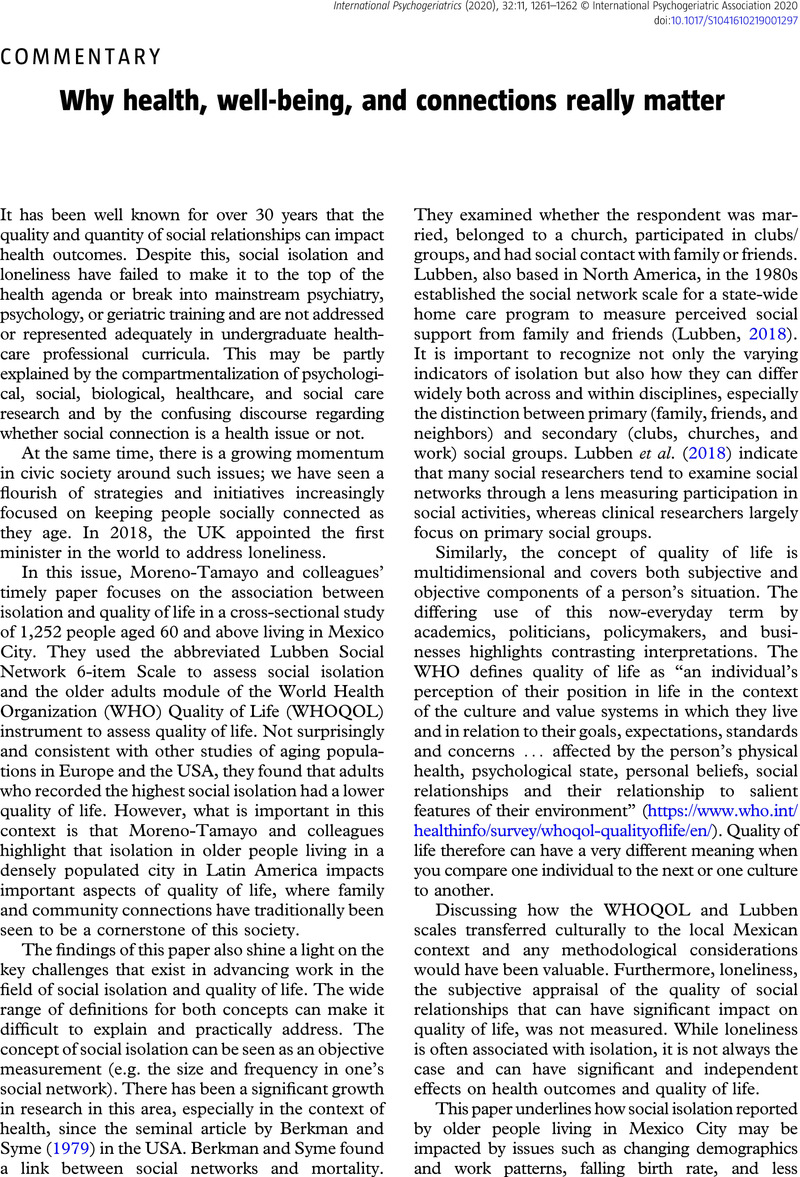No CrossRef data available.
Article contents
Why health, well-being, and connections really matter
Published online by Cambridge University Press: 09 December 2020
Abstract
An abstract is not available for this content so a preview has been provided. Please use the Get access link above for information on how to access this content.

- Type
- Commentary
- Information
- International Psychogeriatrics , Volume 32 , Special Issue 11: Issue Theme: Risk versus Protective Factors for Decline versus Well-Being , November 2020 , pp. 1261 - 1262
- Copyright
- © International Psychogeriatric Association 2020
References
Berkman, L.F. and Syme, S.L. (1979). Social networks, host resistance, and mortality: a nine-year follow-up study of Alameda County residents. American Journal of Epidemiology, 109, 186–204.CrossRefGoogle ScholarPubMed
Lubben, J. (2017). Addressing social isolation as a potent killer! Public Policy & Aging Report, 27, 136–138.CrossRefGoogle Scholar
Lubben, J. (2018). Isolation and loneliness – a US perspective. Loneliness in Later Life: Interventions – what works? 5–7th December 2018, Belfast, Northern Ireland.Google Scholar
Lubben, J. et al. (2018). Eradicate social isolation. In: Fong,
R., Lubben, J. and Barth, R.P. (Eds.), Grand Challenges for Social Work and Society. New York: Oxford Univeristy Press.CrossRefGoogle Scholar
Marmot, M. et al. (2010). Fair Society, Healthy Lives: Strategic Review of Health Inequalities in England Post 2010. London: The Marmot Review.Google Scholar
Moreno-Tamayo, K., Manrique-Espinoza, B., Ramírez-García, E. and Sánchez-García, S. (2019). Social isolation undermines quality of life in older adults. International Psychogeriatrics, 32, 1283–1292.CrossRefGoogle ScholarPubMed
Wilkinson, R. and Pickett, K. (2009). The Spirit Level: Why More Equal Societies Almost Always Do Better. London: Allen Lane.Google Scholar


